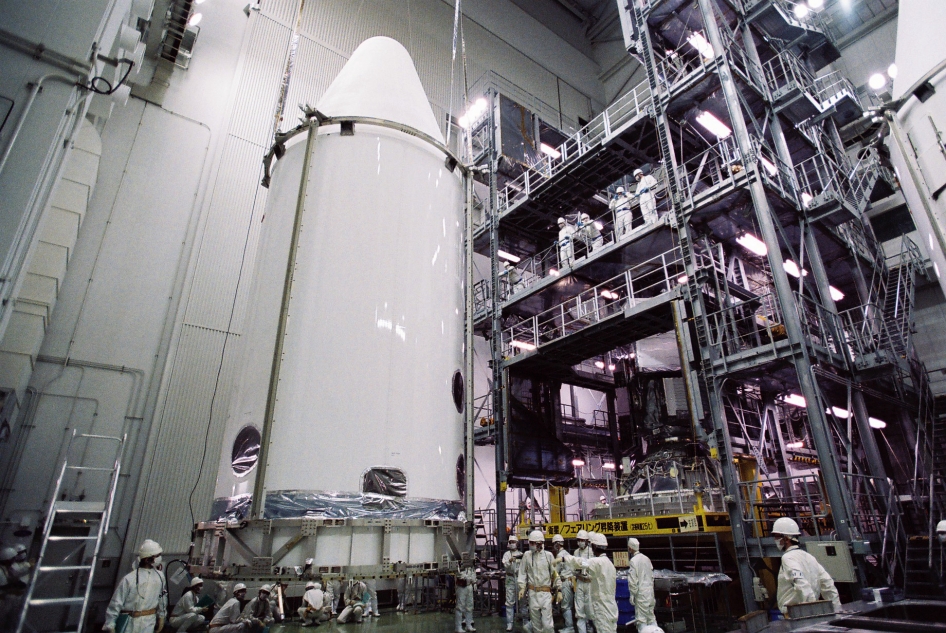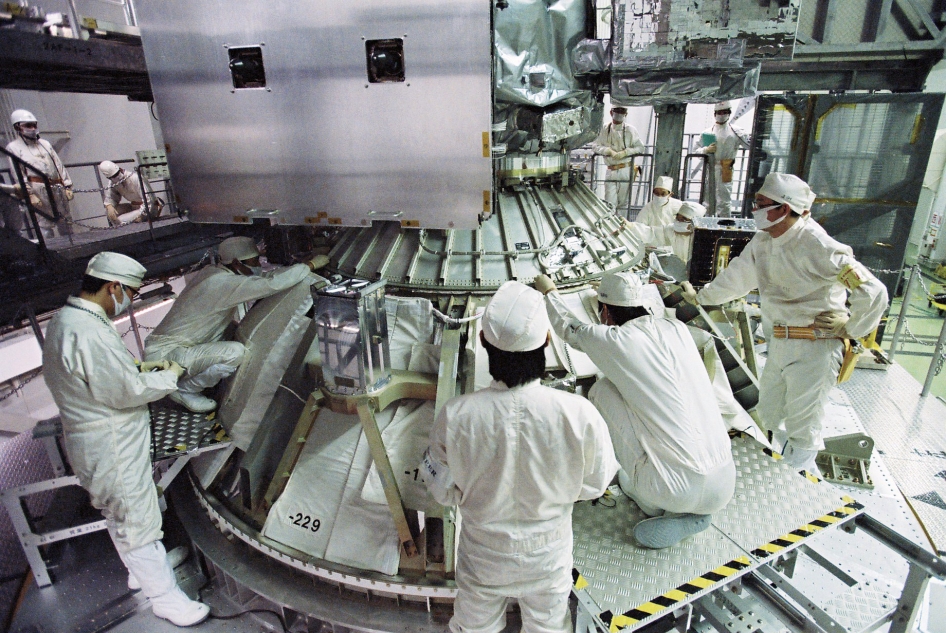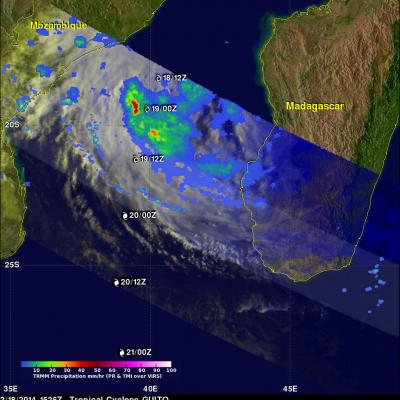GPM Core Observatory Encapsulation Process

Image Caption
The GPM Core Observatory being encapsulated into the HII-A rocket fairing.
On Feb. 11, the Core Observatory was moved into the spacecraft fairing assembly building and into the Encapsulation Hall. Final inspections and preparations were completed for the installation into the fairing, which began on Feb 13. The fairing is the part of the rocket that will contain the spacecraft at the top of the H-IIA rocket.




